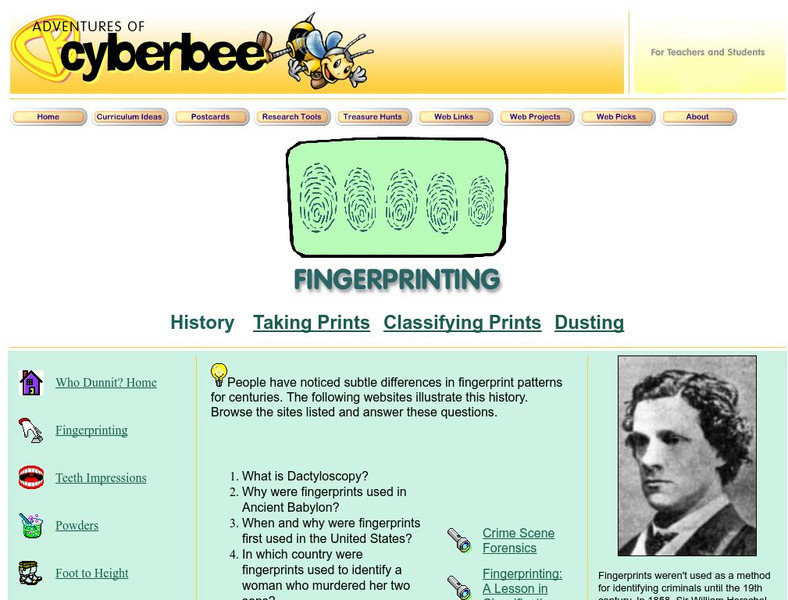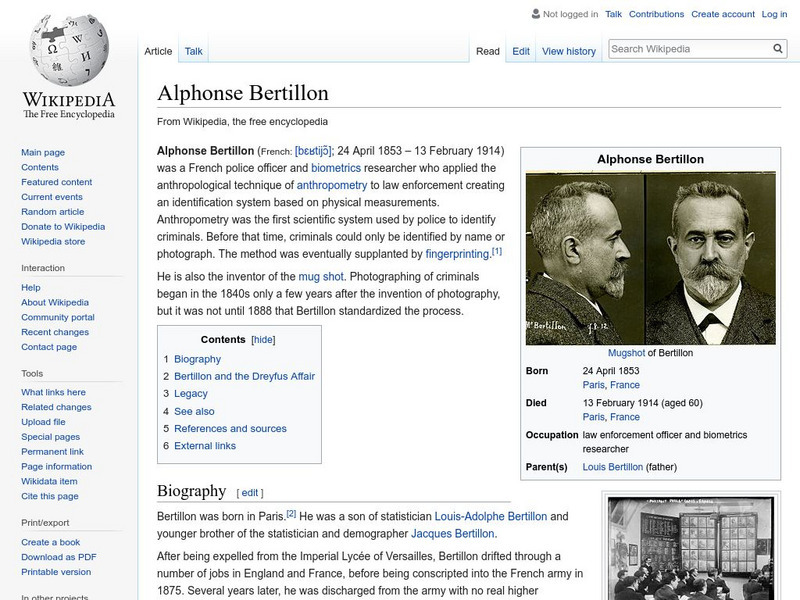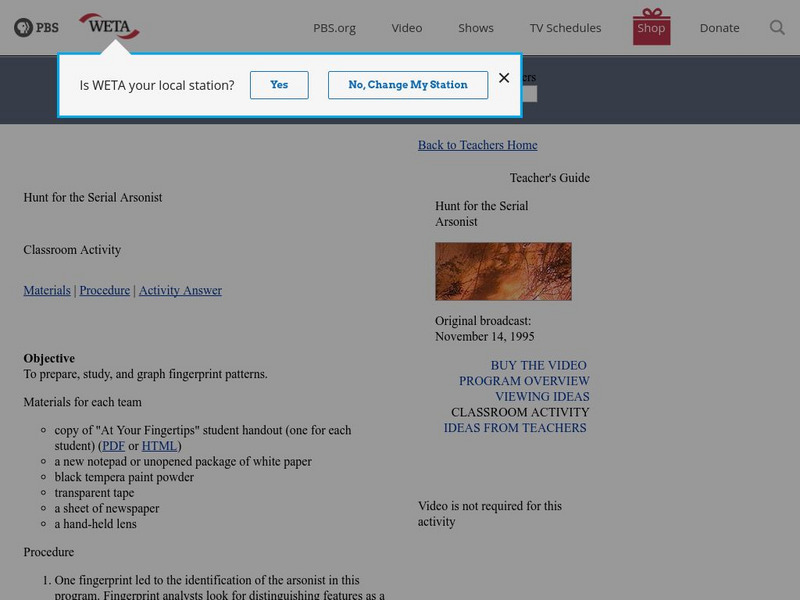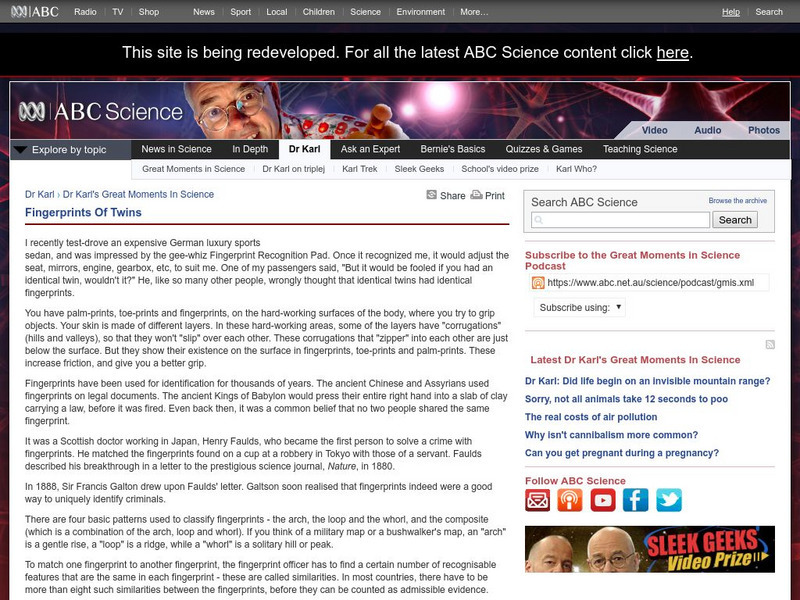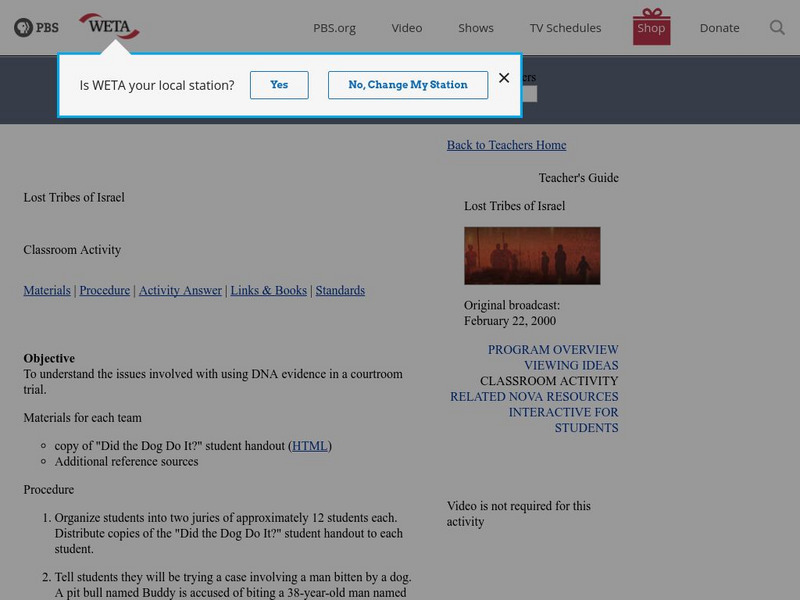Corrosion Source
Corrosion Source: Osmium
This resource presents basic data, along with good information on the history, sources, properties and uses of osmium.
Cyberbee
Fingerprinting
Learn everything you ever wanted to know about fingerprinting! Provides links to a brief history of fingerprinting, FBI Kids site, a lesson in classification, fingerprinting identification and a game.
PBS
Pbs Learning Media: Dna on the Witness Stand
Dr. Eric Lander of the Human Genome Project explains the use of DNA as forensic evidence. He describes the process and need for standards in testing laboratories and discusses the use of DNA evidence as a human rights tool.
Wikimedia
Wikipedia: Alphonse Bertillon
On-line encyclopedia provides information pertaining to Alphonse Bertillon's life work and accomplishments, particularly in the area of forensic science.
PBS
Nova Teachers: Hunt for the Serial Arsonist: Classroom Activity
In this activity they can begin to see how forensic scientists use fingerprints for identification. Students will identify particularly noticeable features in fingerprints and compare students' fingerprints.
National Health Museum
Access Excellence: Dna Fingerprinting in Human Health
This site, which is provided for by Access Excellence, gives a detailed article outlining DNA fingerprinting, how it is used, and how it works.
Museum of Science
Museum of Science and Industry: Online Science: Identify Your Fingerprints
Become a forensic investigator, and follow these simple step-by-step instructions to take, examine, and identify your fingerprints.
Chemicool
Chemicool: Osmium
This site, which is provided for by Chemicool, gives a set of data tables that cover a great many physical and chemical properties of osmium.
Oak Ridge National Laboratory
Oak Ridge National Laboratory: Dna Forensics
A concise explanation of the use of DNA technologies in forensic identification from the Oak Ridge National Laboratory. Additional valuable resources are provided.
John Wiley & Sons
Concepts in Biochemistry: Structure Tutorials
Learners explore the Biochemistry topic of deoxyribose nucleic acid (DNA). Topics examined are DNA replication, cloning, and fingerprinting. The resource consists of articles and animations and culminating questions.
Australian Broadcasting Corporation
Australian Broadcasting Corporation: News in Science: Fingerprints of Twins
If you had an identical twin would you have the same set of fingerprints? Site uncovers the answer by researching the science behind fingerprints.
Biology Corner
Biology Corner: Fingerprint Classification
A lesson where students practice classification by putting fingerprints into groups.
Michigan Reach Out
Fingerprinting: A Lesson on Classification
Who done it? Basic lesson plan to classify fingerprints. Students can classify their own and classmates fingerprints by taking prints and comparing them to the handout provided.
PBS
Pbs Teachers: Lost Tribes of Israel, Dna
Investigate how fingerprinting works, determine what sorts of evidence and questions are important in deciding a court case and understand the issues involved with using DNA evidence in a courtroom trial.
Other
Early Fingerprinting Pioneers
This resource takes a look at some of the early fingerprinting pioneers such as Marcello Malpighi, William Herschel, Alphonse Bertillon and many more.
ClassFlow
Class Flow: Fingerprints
[Free Registration/Login Required] In this flipchart, students identify fingerprints. They will look at contrasts in different prints and make generalizations.
Other
Science Articles:how Does Dna Fingerprinting Work?
DNA fingerprinting is a term that has been bandied about in the popular media for many years, largely due to its power to condemn and save, but what does it involve?

